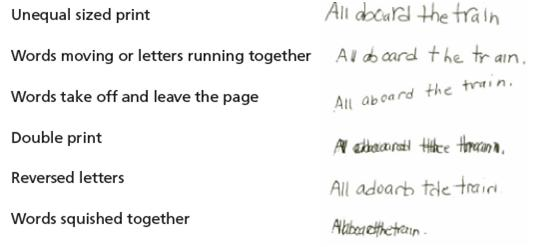Studies show that children who have problems with reading, spelling, writing, math, and/or many social skills are often deficient in the execution of many types of eye movements.
- They do not work both eyes well together as a team (binocularity)
- They move their eyes asymmetrically when trying to converge (point the eyes closer)
- They diverge (point the eyes further away) their eyes
- They have difficulty keeping a target clear where they are looking (focusing and accommodation)
- They make errors when trying to fixate or track a moving object (saccades and pursuits)
Here are ten examples of how vision impacts your child in school:
- When children are first learning to read, vision problems can impede the development of basic reading skills.
- When children are reading to learn, as is the case with older readers, blurry or double vision can impact their ability to read for long periods of time. Reading comprehension can be severely reduced.
- When children have trouble seeing things as clear and single (instead of two images, as is the case with double vision), they may have trouble identifying decimals and/or signs in math.
- When children have poor visual skills, it impacts their ability to organize their writing, and may impair their ability to line up numbers in math.
- In math, not seeing the numbers correctly can lead to miscalculations. When children lack visualization skills, they may have to count on their fingers or verbalize number sequences, which can affect their performance on timed tests.
- When children are adept at math, they may still do poorly because their vision problems affect their ability to read story problems correctly and efficiently.
- When children have problems with visual recall, which is the ability to create a visual image based on past visual experience, they may have difficulty with spelling.
- When children have vision problems, their handwriting may suffer. Vision leads the hand when writing, and a poorly functioning visual system can lead to difficulty with neatness and organization of handwriting.
- When children have laterality and directionality problems, they will have problems differentiating similarly-shaped letters in different orientations (b, d, p, q) and may read or write them backwards.
- When children have poor visualization skills, they may not be able to organize and reorganize a composition in their head, which can affect their writing.
Our goal at Optometric Physicians is to effectively get your child's eyes working together as a team. This blog is a great tool on understanding how your child's vision is affecting them to learn and process information. Please call our office if you have any further question at 615-386-3036.


